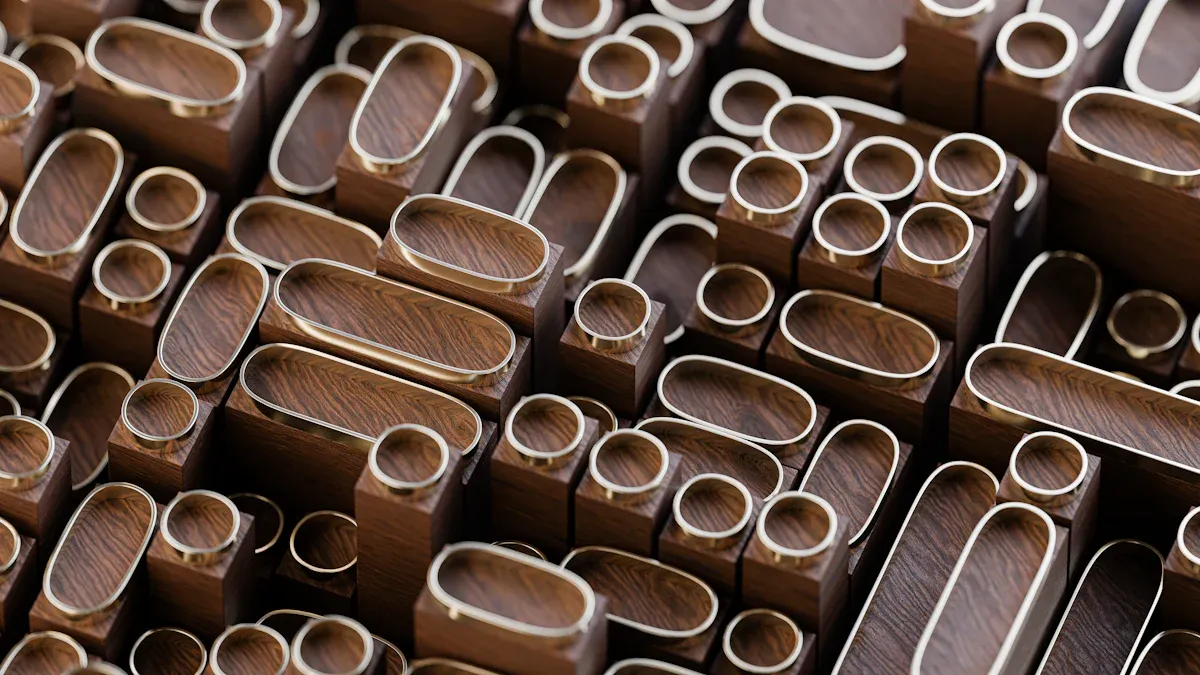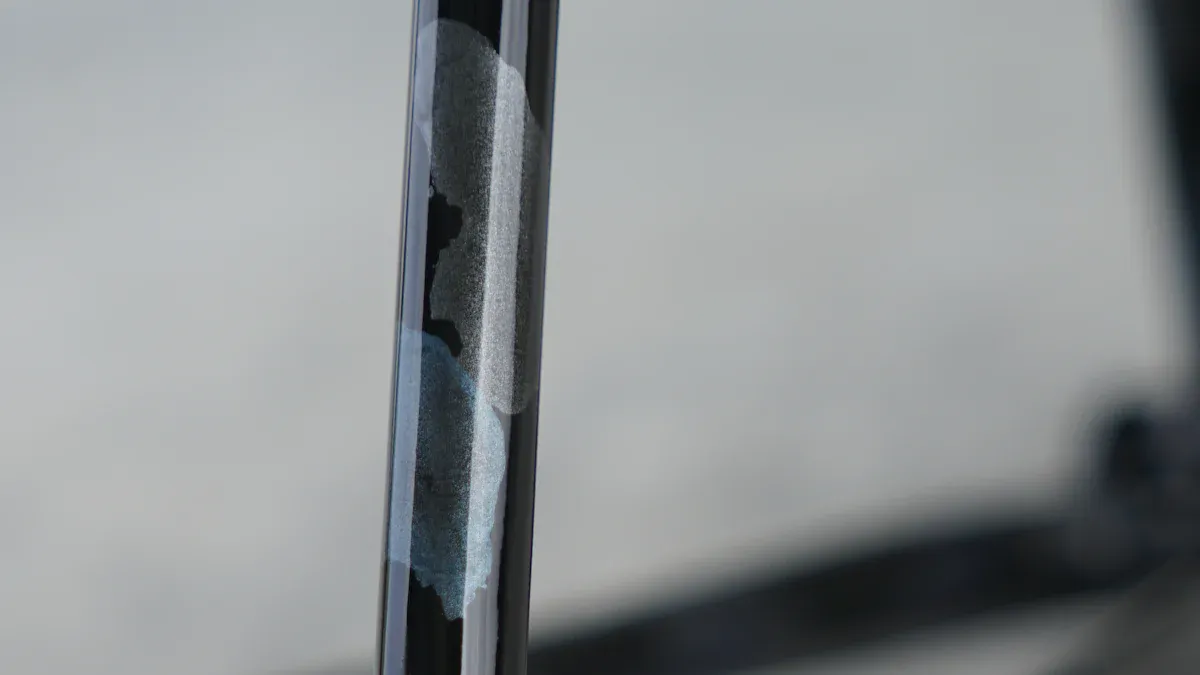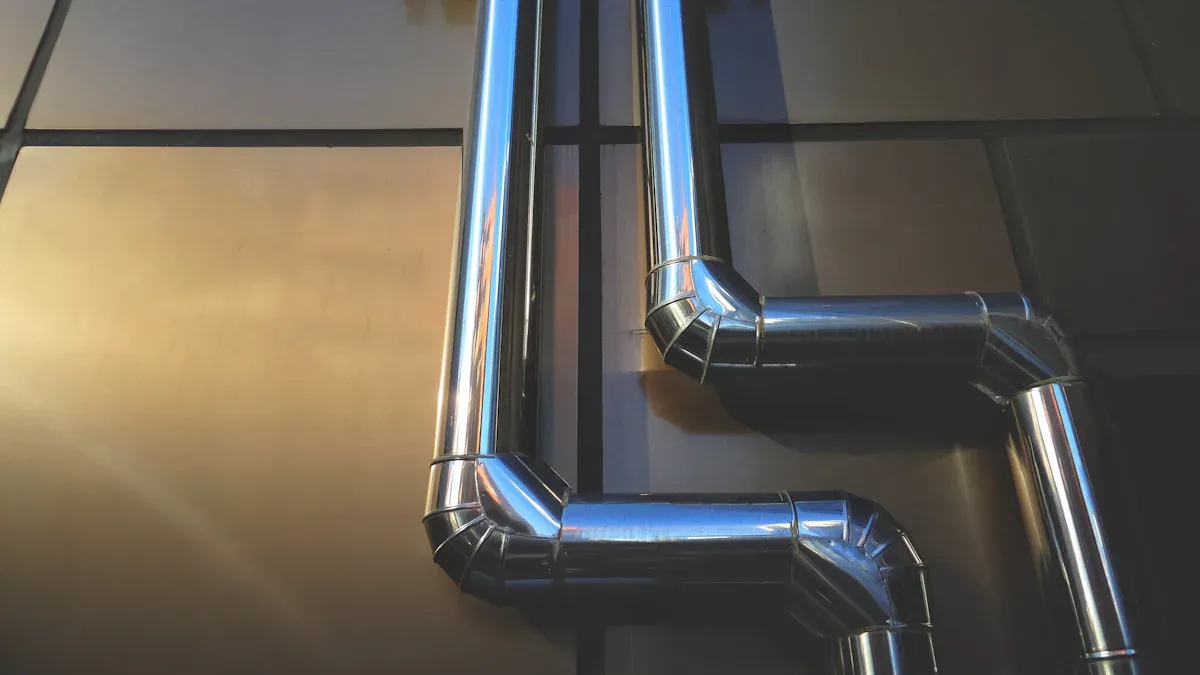
Steel bike frame tubing is very important for cycling. You might have heard some myths about steel. Some people think it rusts easily or that it is very heavy. But today, new chemistry and design make steel frames strong and light. Different types of steel have special benefits. These benefits can improve your cycling experience. Knowing these features can help you pick the best frame for your needs. This is true whether you are commuting, touring, or racing.
Key Takeaways
Chromoly steel is strong and light. It has a great strength-to-weight ratio. This makes it perfect for high-performance bikes. With proper care, it lasts 10 to 20 years.
Hi-Tensile steel is a good choice for beginner bikes. It is heavier and not as strong as Chromoly. However, it works well for casual riders.
Stainless steel does not rust as easily as other types. It is durable and looks nice. This makes it a popular choice for high-quality bike models.
Reynolds steel is known for being lightweight and strong. It is great for touring bikes and custom frames. It combines tradition with modern performance.
Butted steel tubing is lighter but still strong. Serious cyclists like this design. It offers a good balance of durability and lightness.
Chromoly Steel

Properties
Chromoly steel is a strong alloy made from chromium and molybdenum. This mix gives it special features that many people like for bike frames. The usual makeup of Chromoly steel includes:
Element | |
|---|---|
Chromium | 0.8% to 1.1% |
Molybdenum | 0.15% to 0.25% |
Carbon | 0.28% to 0.33% |
Iron | Most of it |
This mix makes a strong and light material. Chromoly steel frames are usually lighter than Hi-Tensile steel frames. This helps you ride faster and move better. On the other hand, Hi-Tensile steel is heavier. It gives stability but can slow you down.
Advantages
A big benefit of Chromoly steel is its strength-to-weight ratio. You get a strong frame without extra weight. This makes it great for high-performance bikes. Also, Chromoly steel is very durable. If you take care of it, these frames can last a long time. They can last about 10 to 20 years with regular use, especially if you keep them from rusting.
Applications
Chromoly steel is flexible and used in many types of bikes. You will often find it in:
High-quality steel frames
Bikes known for comfort, responsiveness, and value
These uses show how Chromoly can provide a great tubeset for different cyclists. Whether you are racing, commuting, or touring, Chromoly steel frames can improve your ride.
Hi-Tensile Steel
Properties
Hi-Tensile steel is a popular choice for bike frames. It is made from low-carbon steel that is strong and cheap. This steel is stronger than regular steel but not as strong as advanced types like Chromoly. The usual mix includes:
Element | Percentage Range |
|---|---|
Carbon | 0.2% to 0.3% |
Manganese | 0.5% to 1.0% |
Iron | Most of it |
Hi-Tensile steel makes sturdy frames, but they need thicker walls. This helps stop bending and breaking. However, thicker walls make the frames heavier, which can slow you down when cycling.
Advantages
A big plus of Hi-Tensile steel is its low cost. If you need to save money, this material is a good choice for beginner bikes. You can find Hi-Tensile steel frames in many cheap models, which are great for new riders.
But, there are some downsides. Hi-Tensile steel is not as strong as Chromoly and other advanced steels. It can handle regular riding, but it might struggle in tough situations. Also, frames made from Hi-Tensile steel often come from lower-quality factories. This can cause problems with how long they last.
Applications
Hi-Tensile steel is often used in:
Entry-level mountain bikes
Commuter bikes
Budget-friendly road bikes
These uses show that while Hi-Tensile steel might not be the best for serious cycling, it works well for casual riders and those who want a cheaper option. Manufacturers check how well Hi-Tensile steel bike frames resist wear. They test them with different loads to mimic real-life use, making sure the frames can handle regular riding.
Stainless Steel

Properties
Stainless steel is a popular choice for bike frames. It has special features that many like. This material has a lot of chromium, which helps it stay strong and easy to weld. The chromium creates a layer on the surface. This layer makes stainless steel very resistant to rust. You can ride in different weather without worrying about rust hurting your frame.
Advantages
Stainless steel is also very durable. It can handle daily use and rough roads. Unlike Chromoly and Hi-Tensile steel, stainless steel does not rust easily. Here’s a quick look at how they resist rust:
Chromoly: Can rust if it gets wet, but good care helps.
Hi-Tensile Steel: Rusts quickly when it gets wet.
Stainless Steel: Has more chromium, which helps it resist rust better.
Besides being useful, stainless steel looks nice too. Many cyclists like the shiny look of stainless steel frames. They stand out, making your bike not just a way to get around but also a cool piece of art.
Applications
You can find stainless steel in many high-quality bike models. Some popular examples are:
Bicycle Model | Features |
|---|---|
TIG-welded stainless steel frame, Columbus Minimal XCR tubes, available in multiple sizes, $3850. | |
Alchemy MS2R | Custom-built stainless model with options for geometry, mounts, and paint. |
Cielo Sportif Racer SE | Handmade stainless steel frame, part of a range of Cielo frames, crafted in Portland, Oregon. |
These models show how stainless steel can improve both performance and style in cycling. Whether you are commuting or racing, a stainless steel frame gives you the strength and beauty you want.
Reynolds Steel
Properties
Reynolds Steel has a long history in making bike frames. In 1935, Reynolds 531 was introduced. This was a big step forward in bike tubing. This steel is known for being strong and light. Many top cyclists and builders liked it. The Cyclist’s Touring Club even gave Reynolds an award for helping cycling.
Reynolds steel tubing comes in different weights. For example, Reynolds 501 is the heaviest at about 6 pounds. On the other hand, Reynolds 531 has different versions. They weigh from 6 pounds for the heaviest to 3.8 pounds for the racing type. The lightest and strongest choice is Reynolds 853. It competes with the lightest 531. This range helps you pick a frame that matches your needs.
Advantages
One big plus of Reynolds Steel is that it works well for touring bikes. This steel is strong enough for thinner walls. This means less weight while staying tough. This is important for long rides where you want to feel less tired.
But, there are some welding limits to think about. You can use TIG welding with AWS ER630 wire. Brass or silver brazing can also work with the right filler wires. Pre-aged tubing is best for building frames because it makes it easier. Remember that cutting and mitre may take longer because the tubing is hard. Purging during welding is a good idea to reduce contamination and improve rust resistance.
Applications
Reynolds Steel is still popular with cyclists who want high-quality tubes. Its history and strong performance make it a good choice for many bike types. You will often see Reynolds steel in:
Touring bikes
Custom-built frames
High-end road bikes
These uses show how Reynolds Steel mixes tradition with modern performance. This makes it a great choice for serious cyclists.
Butted Steel Tubing
Properties
Butted steel tubing is a special design for bike frames. A butted tube has the same outer size, but the wall thickness changes. This design helps make a lighter frame that is still strong.
A butted tube has a constant outside size (usually 25.4, 28.6, 31.8, 34.9, 36.4, or 38.1 mm) and different wall thickness. In double-butted tubes, the ends are thicker than the middle. For example, a common double-butted tube (0.8/0.5/0.8) has 0.8mm thickness at both ends and 0.5mm in the center.
Advantages
The biggest benefit of butted steel tubing is that it cuts down weight while keeping strength. This design puts more material where it is needed, like at the joints and areas under stress.
Description | Mechanical Advantage | |
|---|---|---|
Butted | Thicker walls at one end | Strength where needed, weight reduction |
Double Butted | Thicker walls at both ends | Enhanced strength and reduced weight |
Triple Butted | Three levels of thickness | Optimized strength distribution and weight savings |
Double-butted tubing is usually lighter because it has less material in the middle. On the other hand, triple-butted tubing has more material overall, making it a bit heavier. But it gives better strength, especially at important spots like the headtube.
Applications
You can often find butted steel tubing in high-quality bike frames. Double-butted tubing is often used for top tubes and downtubes, balancing strength and weight. Triple-butted tubing works well for main frame tubes and very light seat tubes, giving extra strength where it is most needed. This makes butted steel tubing a favorite among serious cyclists who want a lightweight and strong frame.
Picking the best steel bike frame tubing is very important for your ride. Think about these things when you decide:
Diameter: Wider tubes are stronger but heavier.
Wall Thickness: Good tubes have different thicknesses. Thicker ends make them last longer.
Butt Length: This changes how the tube shares strength and weight.
Every type of steel has its own features. For instance, Chromoly is strong and light, while stainless steel is great at resisting rust. By knowing these differences, you can choose a frame that fits your riding style and likes. Remember, the right choice makes your rides more comfortable and helps you perform better! 🚴♂️
FAQ
What is the best steel tubing for racing bikes?
Chromoly steel is often the best choice for racing bikes. Its strength-to-weight ratio allows for a lightweight frame that enhances speed and performance.
How do I maintain a steel bike frame?
To maintain your steel bike frame, regularly clean it with mild soap and water. Apply a protective coating to prevent rust, especially after riding in wet conditions.
Can I use a steel frame for mountain biking?
Yes, you can use a steel frame for mountain biking. Chromoly and Reynolds steel offer durability and strength, making them suitable for rough terrains.
What are the weight differences between steel tubing types?
Chromoly steel is lighter than Hi-Tensile steel. Reynolds steel varies in weight, with options like Reynolds 531 being lightweight yet strong, ideal for touring.
Is stainless steel worth the extra cost?
Yes, stainless steel is worth the extra cost for its corrosion resistance and durability. It offers a unique aesthetic appeal and can last longer than other steel types.
See Also
Understanding The Differences Between Bike Frame Materials
A Guide To Bike Frame Components And Their Roles
Why Chromoly Steel Frames Are A Top Choice
